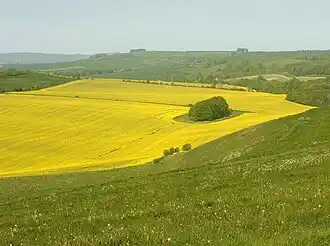Ireland, the third-largest island in Europe, is located on the westernmost edge of the continent. It forms part of the British Isles. The island's geography is characterized by a diverse landscape of coastal mountains surrounding a central lowland plain[1].
Ireland relative geographic isolation has been a driver of the country's distinct cultural identity. This is based around unique traditions, folklore and customs as well as the Gaelic language. Its geography has also meant that, historically, Ireland was less influenced by external forces than continental European countries[2].
Research your ancestors on MyHeritage
Key geographical features of IrelandKey geographical features of Ireland
Ireland's diverse landscape reflects its complex geological history. The island was formed when two ancient continents collided millions of years ago. What followed were periods of volcanism, inundation by tropical seas and, at the other extreme, glacial activity which significantly shaped Ireland's current topography[3].

Today Ireland's geography is a blend of rolling central plains, coastal mountains, abundant water features and a mild climate. The central lowland, known as the Midlands, is a broad, undulating plain underlain by limestone. This area is dotted with numerous lakes, bogs and low hills. This plain is ringed by a series of coastal highlands. The highest peak is Carrauntoohil (Corrán Tuathail) in County Kerry, reaching 1,039 meters (3,409 ft) above sea level. Ireland boasts the longest river in the British Isles, the Shannon, as well as a rugged coastline comprising many bays, peninsulas and towering headlands.
The island's natural features have been incorporated into legends and ancient religious practices, contributing to the country's rich storytelling tradition. Its climate is influenced by the Atlantic Ocean which has resulted in mild temperatures and abundant rainfall. The country's nickname -- "The Emerald Isle"-- reflects the lush vegetation that its geographic location and climatic conditions have created[4].
Practical impacts of Ireland's geographyPractical impacts of Ireland's geography

Ireland's geography influenced the development of defensive structures and settlements from its earliest human inhabitation. Later the Iron Age saw the construction of ring forts (raths) on hilltops. In the Middle Ages Norsemen, originally arriving as raiders, but later becoming integrated into the indigenous Gaelic society, established coastal settlements that grew into the country's major cities such as Dublin and Galway[2].
Ireland's geography also provided various important natural minerals, such as zinc, lead, natural gas, copper, gypsum, limestone, granite, peat, silver and gold. Access to these greatly influenced Ireland's economic, trade and culture development. Meanwhile Ireland's temperate climate and fertile lowlands created a rich agricultural foundation. Farming, and the people who worked the land, have played a central role in the country's economy and way of life for much of its history.
Relevance to genealogical researchRelevance to genealogical research
Understanding Irish geography can be helpful when researching Irish ancestors in different ways:
- Knowing the specific location where your ancestors lived is essential for finding relevant records. Ireland is divided into provinces, counties, baronies, parishes, and townlands. Each level of division will likely hold different types of genealogical records.
- A feature of the Irish population is its many common surnames. Confusingly people with identical names, or with variations of the one surname, also often lived in close proximity. Pinpointing the local geography can assist in distinguishing between related or unrelated individuals and families[5].
- Ireland's geography greatly influenced settlement patterns, economic activities and migration. This resulted in demographic changes and population movements that affected many individual family histories.
An appreciation of Irish geography can guide and expedite family history records. You will be better equipped to locate and interpret records most relevant to specific Irish ancestors. As well you may gain a better appreciation of how their physical environment helped shape them and the lives they led.
See alsoSee also
References
- ↑ Wikimedia Foundation. (2025, January 17). Geography of Ireland. Wikipedia.
- ↑ 2.0 2.1 Ireland: Culture history and cultural landscape. (n.d.).
- ↑ Encyclopædia Britannica, inc. (2025, January 15). Ireland.
- ↑ National Geographic Kids. (2023, February 13). Ireland Country Profile - National Geographic Kids. Geography.
- ↑ How to trace your Irish genealogy. MyHeritage Knowledge Base. (2025, January 13).

